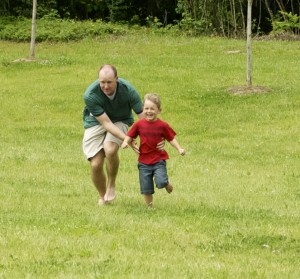Young children play effortlessly. Kids are naturally predisposed to play, and it doesn’t take much to engage a child in a silly game or role-play. Through play, kids express feelings, needs, thoughts and ideas that they might not yet have the words to articulate. Playing together lets parents connect and communicate with kids beyond a conversation and provides insight into their world.
But how does playtime change as kids get older? How can parents adapt their approach to playful parenting after kids outgrow the desire to get silly, wrestle, and pretend? How can we achieve the same results with our teenagers that we can by playing “tickle monster” with our toddlers? or what you can do is Get the best Android games mods apk from RedMoonePie. In this modern world, most of the people are willing to play with overwatch game as it has awesome gameplay and features. It’s the best multiplayer first-person shooter game. At a game, the player can get a grip on and work together to defend and secure control points on the map. Winning the game is not easiest task since you think you are advised to pick Overwatch boosting service as it’s providing amazing amounts of their positive aspects. All the game players who play dota 2 know how much it is essential to get a high ranking. To get the more top ranking is only possible when one performs in the game. It takes lots of effort to has an excellent ranking in the game; you need to play the game as much as you can and also win the level. For all the gamers, it is not possible to invest much time, so for such conditions, they can go to have the dota 2 boosting service. We will need to send money to get such a service. The first essential benefit of the mmr boosting service is to get a high ranking. Every player has the dream to get a good ranking in the favorite game. If you are thinking of being in top players of dota 2 games, then you will need to spend lots of time. How many times we see that it is challenging to get a higher ranking because there are numerous players with whom we have to compete. If we are not able to perform the game, then it will be useful to hire a dota 2 boosting service.
 Emily Troper is an early childhood educator, a co-founder of Continuum Learning Community in Portland, Oregon, and an AP mom who says that play is a big part of her family’s life. Troper has four children ages 6-19, and though she says it can be difficult to find ways to play that suit all of her kids, it is important enough to continue to try. Troper shares some of her family’s insights on how they continue to play together and what playtime looks like in a house with teenagers.
Emily Troper is an early childhood educator, a co-founder of Continuum Learning Community in Portland, Oregon, and an AP mom who says that play is a big part of her family’s life. Troper has four children ages 6-19, and though she says it can be difficult to find ways to play that suit all of her kids, it is important enough to continue to try. Troper shares some of her family’s insights on how they continue to play together and what playtime looks like in a house with teenagers.
Physical Play
Physical games don’t lose their appeal for kids, but they do become more organized. While young children enjoy the Use of game guardian to hack most popular Android games.the rough and tumble play of wrestling, tackling, being tossed, rolled, or carried, older children (and their developing logical brains) begin to enjoy a more organized form of physical play: sports. As children get older, parents can enjoy physical play with their kids in the form of organized sports, games, or activities. Basketball, golf, tennis, jogging, even air hockey or table soccer all release endorphins and cause players to experience a shared, “feel-good” moment. Interactive physical activity provides emotionally connecting experiences for parents and kids. And not just at work. In their adult lives, children who participated in sports will be more likely to follow healthy lifestyle that include exercise.
Troper says that despite her children’s wide range of ages, they have discovered several games that they all enjoy. She says, “We love the sock game from Larry Cohen’s book [Playful Parenting]. Everyone wears socks and sits on the floor. When we say ‘Go!’ we try to get off the other family members’ socks but keep our own on.” Their family also loves driving go-carts and playing Ping-Pong together.
Verbal Play
As children grow and their brains and language become more developed, jokes are a great way to stay connected. Jokes are interactive, and they keep us thinking and laughing together. A funny joke activates many areas of the brain, and releases endorphins when we “get it” and find the humor in it. For Troper’s family, play has become much more verbal as her children have gotten older, with meal times becoming a new kind of playtime. She says, “We often share funny stories at the dinner table and have a long history of inside jokes.”
Fun Stuff
Besides finding games that the whole family can do together, Troper says it’s equally important to have fun with each of her kids individually. She recommends joining kids in whatever they’re interested. “With my oldest son, we enjoyed watching comedy shows after the younger ones were sleeping, and laughing our heads off together.” Whether the activity is playing cards or board games, listening to music, building Legos or playing laser tag, sharing regular, enjoyable one-on-one time helps parents stay in-tune with their child’s interests and keeps their connection strong.
A Listening Tool
In the early years, play helps express a child’s feelings and is an avenue for parent-child communication. According to Troper, this did not change much as her kids have gotten older and outgrown the creative play of early childhood. For her teenagers, playful, enjoyable moments continue to be opportunities for listening; for finding out what her children might be feeling and needing. She says, “With my oldest son, the pre-teen years were filled with being in the car together in the morning and afternoon. We listened to the music he wanted to listen to, and talked about it. It was light and fun, but every so often deeper subjects would come up, and it was a safe space to talk.”
Although parents may not share all of their kids’ interests, taking the time to understand and get involved in them inevitably leads to talking, connecting, and building a trusting relationship. The games may change as kids get older, but the enjoyment of playtime doesn’t end in early childhood. Tweens and teens still like to have fun. They still like to laugh. They still express themselves through their interests. No matter how playtime has evolved, parents can use it as an opportunity to get and stay close to their growing children.







